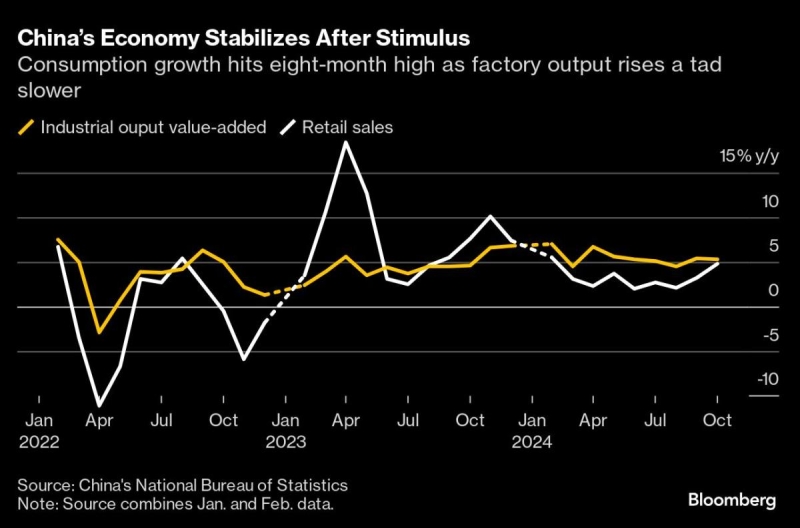
This year two large pharmaceutical companies — Eli Lilly (LLY) and Pfizer (PFE) — have launched direct-to-consumer strategies, raising the questions: Why are drugmakers investing in this and why now?
The answers are not one-size-fits-all, according to industry experts. For Lilly, which was the first to launch this year in January, it's about stamping out unauthorized copycats of its blockbuster GLP-1s. It's now offering direct-to-consumer telehealth and prescription delivery services for obesity, diabetes, and migraines from its website, LillyDirect. For Pfizer, the goal is to leverage the brand recognition it gained from its COVID-19 vaccines and parlay it into stronger sales for other diseases. It's now also offering telehealth and prescription delivery on its platform PfizerForAll for migraines and its respiratory vaccines.
But one common factor, which could prompt other pharmaceutical companies to adopt a direct-to-consumer model, is that the online experience is creating a sticky customer base in the health space. That's according to Mike Flaherty, a healthcare strategist and partner at Deloitte.
"If you look at the data about online experiences, particularly acquiring prescriptions and then drugs-to-home delivery, many patients or consumers will tell you that their experiences … are better than the traditional model," Flaherty said.
The consumer feedback is based on what is known as a net promoter score (NPS), Flaherty said, a measure of customer loyalty and satisfaction based on survey results. The NPS was created by Bain & Company and ranges from -100 to 100, where an NPS of over 50 is considered acceptable.
Some popular examples of successful online health platforms are Ro, Hims & Hers (HIMS), and GoodRx (GDRX), which all offer telehealth and prescription services. Hims has an NPS of 65, according to an investor presentation in 2020. GoodRx has an NPS of 74, according to its latest data. Ro decline to provide its net promoter score. Sesame, a newer platform that has partnered with Costco (COST), has a score of 81.
Flaherty said the data points to an attractive model for a pharmaceutical company looking for ways to sell more drugs to patients and keep them coming back.
"Because part of what I'm trying to do is identify patients who are a good match to my medication, get them on treatment. But ultimately, I want them to persist — that's one of the economic drivers for a pharmaceutical company," Flaherty said.
The PfizerforAll app. (Pfizer)
Why now?
While there have been recent failures in attempts to consumerize healthcare, such as the closures of retail health locations by Walmart (WMT) and Walgreens (WBA), the telehealth world has had some success — especially when segmented by specialty.
It has made it easier for consumers looking for information on a specific disease — say diabetes or obesity or even mental health — to search online. This leads to websites for telehealth platforms, which provide answers and then offer quick and easy avenues for care.
"The healthcare industry is undergoing a reconfiguration," Flaherty said. "The knowledge and the power within the industry (has not been) easily accessed by the consumer, and that's been changing."
Fueling the strategy's appeal is the fact that consumer habits online are more predictable, thanks to data collection that helps a company gain insight into who its consumers are.
"You know what's valuable in all this? The data. There's a way in which, if you're collecting data that's teaching you about the markets engagement that you then use to identify either good trends … or friction points, and you can respond to both to improve the delivery of the experience," Flaherty said.
The traditional model doesn't give pharmaceutical players insights or engagement with patients, Flaherty said.
Now, in a world where most patients, and especially future generations, are likely to engage online — and have multiple avenues to do so that include wearables and smart speakers — the legacy companies are taking a step back to understand their role in the online economy.
"I, as a pharmaceutical company, haven't seen patterns of choice and haven't had visibility, but online gives me an opportunity to do that," Flaherty said.
If the direct-to-consumer platforms are built well and the strategy gains popularity, the win could be greater adherence to medications in the near term — an ongoing problem in the industry — which would result in more regular sales of the drugs in the long term.
One of the most compelling ideas behind the direct-to-consumer strategy is to battle the copycat weight-loss drug competition that the GLP-1 companies, Lilly and Novo Nordisk (NVO), are facing. Lilly has sent legal notices to compounders and sellers of the imitation versions of its drugs. But it hasn't been able to stop the sales of imitations on platforms like Ro and Hims — the former of which is aggressively advertising weight-loss drug access at a fraction of the cost of the branded versions.
Will DTC cut out PBMs?
The most obvious byproduct of this effort is that it could upset the opaque and confusing prescription system in the US, dominated by insurers and pharmacy benefit managers (PBMs), as well as result in greater sales of a product — especially at a time when patients often seek out doctors for specific drugs, rather than the doctor choosing.
But for now, the strategy is new and remains to be evaluated. That includes what the metrics of success will be.
"They're in a period of exploration and establishing the connection [with patients]," Flaherty said.
Lilly has said so far on earnings calls that the products ordered through LillyDirect have been "fairly limited" for the first half of the year.
Short-term limitations include availability of options, tweaking the process, and finding patient pain points, as well as understanding which products are not going to be easy for patients to handle.
But the process "can be economically viable over the medium and long term," Flaherty said.
It's why more companies are likely to follow Lilly's and Pfizer's example. The hope is that with the launch of these new consumer-facing platforms, drug companies will be playing a greater role in investing in digital health — and maybe creating a new model of vertical integration.
BMO Capital Markets research analyst Evan David Seigerman explained as much in a note in January, when Lilly first announced LillyDirect — noting it creates a new type of vertical integration in healthcare.
"We view Lilly's support as a gentle, arms-length vertical integration. The DTC program is likely to improve margins over time and drive engagement, which deepen Lilly's metabolic moat," he said.
And whether or not this creates a new world order for prescription drugs is yet to be seen.
"That model of the PBMs and you and I going down to 123 Main Street, to the corner drug store, will still exist for a long time," Flaherty said.
BMO's Siegerman, meanwhile, thinks things could change.
"The announcement did not provide color on whether this program will impact the cost to patients and payers, although we anticipate the program to improve margins over time as PBMs and pharmacies themselves are removed from the transaction," he wrote





